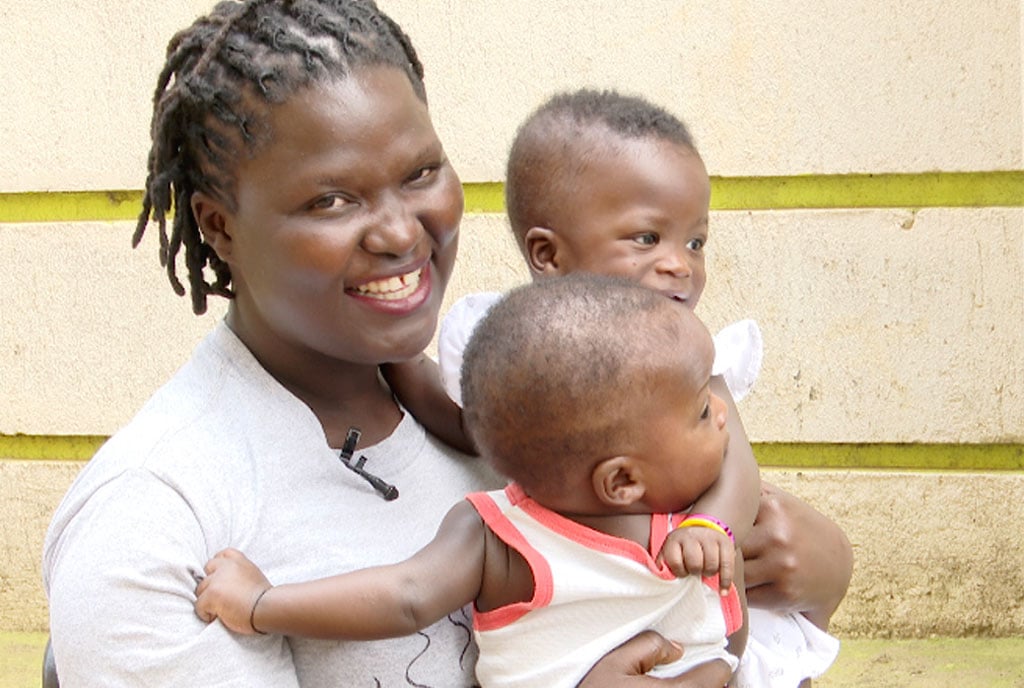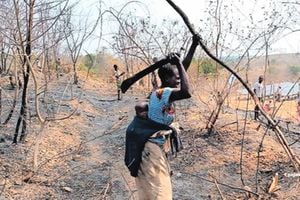
Emmanuel Ssemirembe Katongole, 35
Emmanuel Ssemirembe Katongole, 35, is one of the few men who have openly shared their personal journey with cancer.
Diagnosed with skin cancer in December 2021, his battle began with a series of unexplained health problems. His skin turned pale, his joints and feet swelled, and he experienced tremendous weight loss. He moved around the clinics near his residence in Nansana Wamala but they could not figure out what was wrong with him.
Weighing 98 kg initially, he reduced to 35 kg before doctors at Mulago Hospital finally uncovered the cause of his suffering.
“I went to St Joseph Hospital where my family usually got treatment and the doctor there recommended that I go to Mulago Hospital so that I get proper medical attention. At this point, I even found it hard to breathe. My situation kept worsening but I did not know what was wrong with me.”
A battle for breath and strength
At the Uganda Cancer Institute in Mulago, doctors performed a biopsy, taking a sample of skin cells from his left hand.
He tried to manoeuvre through the maze at Mulago but could barely take six steps without taking a rest. Two weeks later, the results confirmed that Katongole had stage 2B skin cancer. The news was devastating, especially since no one in his family had ever been diagnosed with the cancer before.
“My father had ulcers that were not healing even after treatment. When we took him to hospital, the doctors says that the ulcers had become cancerous but he died a week after the claim had been confirmed,” he recalls.
Katongole was forced to reveal his condition to his family, who had begun avoiding him out of fear that his illness might be contagious.
He was then sent to carry out several other tests to assess how much damage the cancer had caused. Further tests revealed that while his liver, kidneys, and heart were unaffected, his lungs were filled with pus, making it difficult for him to breathe.
“They were the cause of my difficulty in breathing. The doctor says they were filled with pus and it was because the cancer was starting to move from the skin and affected the lungs,” he says.
Katongole returned to St Joseph Hospital, where he underwent surgery to drain the pus from his lungs. His wife cared for him during his recovery, and he remained at home for two months to heal.
Fighting for his life
In March 2022, he commenced the process to embark on his chemotherapy treatment but the whole process of assessment took him another month. By then, his skin was covered in bumps that resembled nodules, and his self-esteem had dropped.
“I was told that I was going to be an in-patient and on the day I started the treatment in April. The doctors sent away my wife and friends who had come to visit me. They tied me to the bed because I kept pulling out the cannula. I was very weak but I would hear everything they would say. After the treatment was administered, I overheard the doctors telling my relatives that if the first dose of the chemotherapy is done and I do not vomit, then I was not going to recover,” he says.
Midway the dose, Katongole vomited.
“I smiled in my heart with triumph because I wanted to live. The treatment had gruesome effects on me but I had to be strong for my wife and children. As time went on, the nodules disappeared but my skin turned black. I was weak and would vomit all the time. I stayed in the hospital until June 2022,” he says.
Resilience
After this phase of treatment, he was discharged and was coming from home. During this time, Katongole underwent several counselling sessions with other cancer patients, which helped him cope with his situation.
From the sessions, he learnt that skin cancer can sometimes be caused by unmanaged HIV or exposure to hazardous industrial chemicals.
“The doctors say, it could be caused by HIV that is not managed, using skin products that contain wrong ingredients, especially for people who bleach their skin and exposure to industrial chemicals that can be hazardous,” he says.
The counselling prepared him for the next phase of treatment. He thinks that what kills cancer patients is a lack of care and proper counselling to prepare them to go through the treatment process.
In October 2022, Katongole completed another phase of chemotherapy, which he received every two weeks. Despite his illness, he had his kukyala (traditional marriage visit) a week before his lung surgery and went on to marry his wife in September 2022.
By January 2023, he had made progress and was given dietary guidelines to aid his recovery. His reviews went from being monthly, to quarterly, to biannual, and he now attends yearly check-ups. Today, Katongole weighs 87 kg.
Voice for change
Unfortunately, Katongole’s wife abandoned him after the treatment and got married to his neighbour.
“I wish people can know that cancer is not contagious. I was saddened that my wife stood by me when I was sick and left when I got better. I bleed for my children,” he notes.
Now a voice of hope, Katongole advocates for cancer awareness and early detection.
“Cancer is silent. It eats away at your body without noticeable signs, and by the time you feel pain, it may be too late. People should be screening more for cancer even when they do not have pain. I am a testimony that cancer can be cured,” he says.
Katongole has since returned to his life as a boda boda rider and remains an advocate for early cancer detection and support for those battling the disease.
ABOUT SKIN CANCER
According to Centers for Disease Control and Prevention (CDC), skin cancer is a disease in which cells in the skin grow out of control. The skin is the body’s largest organ. Skin has several layers, but the two main layers are the epidermis (upper or outer layer) and the dermis (lower or inner layer). Skin cancer begins in the epidermis. Skin cancer happens when there is an overgrowth of certain cells in your skin.
As ozone levels are depleted, the atmosphere loses more and more of its protective filter function and more solar UV radiation reaches the Earth’s surface. It is estimated that a 10 percent decrease in ozone levels will result in additional skin cancer cases.
There are several different types of skin cancer, including basal cell carcinoma (BCC), squamous cell carcinoma (SCC), melanoma, and many others. While there are differences between each type of skin cancer, exposure to ultraviolet light leads to DNA damage that can result in any type of skin cancer.
Skin cancer can affect anyone, regardless of skin colour. However, skin cancer in patients with darker skin tones is often diagnosed in its later stages, when it’s more difficult to treat. A skin cancer diagnosis will require treatment. Treatment for skin cancer usually requires surgery. In some cases, patients also need some combination of other cancer treatments such as radiation therapy, chemotherapy, and/or immunotherapy.




